San Blas, Panama
The sand is as white as snow. The water is a clear, turquoise blue, so vibrant that it almost looks like a painting. Swaying palm trees are back dropped by clear skies on a deserted Caribbean island. There is not one tourist or sunglasses salesmen in sight. This is the picture perfect image I see as I emerge from the ocean. It is difficult to express so much beauty in words. As I submerge myself into the ocean below, thousands of colorful fish, sting rays and sharks are visible in all directions.
All this beauty leads me to believe that, if there is a Garden of Eden then, after all of my numerous expeditions exploring the globe, I have quite possibly found it. This is San Blas, in Kuna Yala, Panama. Paradise on earth.
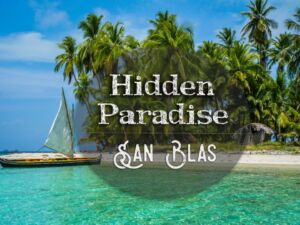
Where Is San Blas?
How can a place like this remain unknown to most travelers? The fact is that San Blas, to this day, has remained under the radar of most tourists simply because of how remote and undeveloped it is. This province is an autonomous tribal region, with its own independent government, which is influenced minimally by the rest of Panama. Roads, resorts and infrastructure are slowly making their way here, but the majority of San Blas has been kept in its natural state, under the watchful eye of the Kuna.
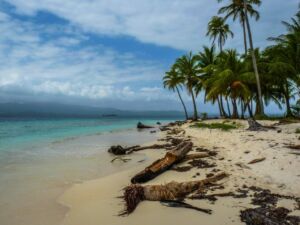
The San Blas Archipelago is located in the autonomous region of Comarca De Kuna Yala, in Northeast Panama. The region stretches all the way from the Golfo De San Blas in central Panama to the Columbian border.
The majority if Kuna Yala’s 400 islands are uninhabited, but the ones that are inhabited are incredibly congested. Some of the islands’ people have constructed resorts that cater to tourists who either fly in to the islands’ private airstrips or arrive by boat from El Povenir, Kuna Yala’s larger commercial city.
Getting to San Blas
The story of how I stumbled upon this paradise begins in the cosmopolitan capital of Panama, Panama City. Tired, exhausted and covered in dirt from crossing the Darien Gap, I was recovering with a cold one in the Luna’s Castle Hostel. This old colonial Spanish building is a great reminder of the time when Panama was occupied by the Spanish, and provides the unique opportunity to stay in a place a real explorer would have stayed many years ago. As I pondered over the past few weeks of uncharted jungle exploration, I cannot help to think that there must be more adventure to be had here.
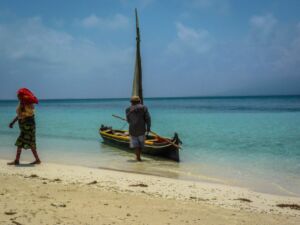
Andreas, the hostel owner, recognises me and approaches me. Andreas had helped me get to the Darien two weeks earlier. After telling him of lost tribes, jungle leeches, and making it to the Columbian border, I ask him where I should go next. Andreas simply says “San Blas, of course.” Andreas tells me that his hostel does jeep trips out into the Kuna Yala region, from which a local fisherman can take me to a small island called Isla Robinson in San Blas. The trip would cost me $35 US and would take around eight hours, as the roads are in very bad condition.
The next morning morning, a four seat Jeep arrived at the hostel doorstep and two fellow travellers from Holland and I crammed into the back seat. The driver packed the Jeep’s roof and passenger’s seat full of supplies that he was bringing back to his family’s island in Kuna Yala. He explained that basic necessities are hard to find and expensive in the archipelago, so he was taking as much as he could from the city.
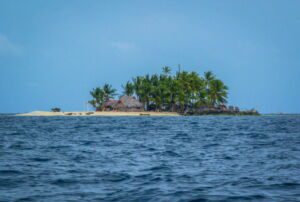
The drive was indeed bumpy. After about four hours, our driver left the cracked pavement for a muddy dirt track. We followed this trail for about an hour deep into the coastal jungles. Our jeep, covered in mud and branches, emerged from the jungle and onto the coast by a small fisherman’s hut.
The beautiful Panama coast was gleaming from the afternoon sun. In the distance, black clouds began to form. The crisp air foretold the arrival of a storm. A Kuna fisherman pulled into the dock and ushered to us to move fast as the sea was about to become dangerous. We quickly loaded our gear, and waved goodbye to our driver.
Our small fishing boat pounded over the ever-growing blue waves. The rain fell hard on the light tarp we used to shield ourselves from the elements. Thundered roared above and the boat began to really struggle in the fierce, angry sea.
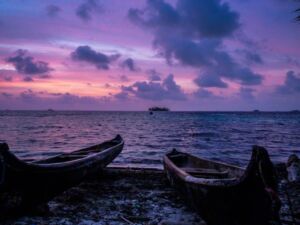
Finally, after two hours of hair raising, gravity defying boat stunts, we came ashore on what looked to be a deserted island. We jumped off the boat into the white sand with bare feet and backpacks, like ancient explorers before us had done.
Isla Robinson – Backpacker Paradise
The palms swayed, the blue water slammed the shoreline, and the sky above roared with thunder and wind. Behind me, the fishing boat took off, leaving us to be marooned. That was until a friendly Kuna man yelled out from a small, thatched hut. “Welcome to Isla Robinson! Come have some rum.”
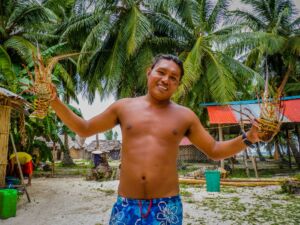
Entering the thatched hut, the real remoteness of the area hits you. This old, battered, grass roofed thatched hut was all that stood to protect you from the storm outside. Inside, the hut is lit by a few, dim candles. In the far corner, a pot bubbles giving off the aroma of fresh seafood soup. It is not much, but it does have a cozy feeling to it, I think to myself.
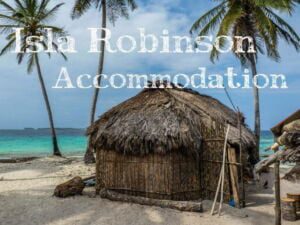
The man who had been calling to us earlier told us his name was Marco. He is the sole inhabitant of “his” end of Isla Robinson. Marco poured us an obligatory shot of rum, which the Dutchmen and I gulped down like pirates on a new found island. After the rum, Marco gave more details into the island’s history and its inhabitants.
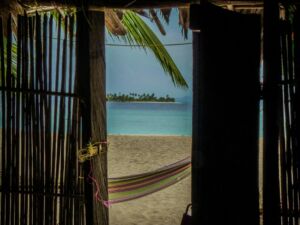
Who are the Kuna?
Marco explained to us how this region is under the autonomous rule of the Kuna tribal people. The Kuna are very different from their mainland Panama counterparts. First of all, they are not ethnically from Spain. They were the original inhabitants of this area before colonisation. They speak their own language and have their own religion.
Panama is predominantly Catholic. The Kuna, however, believe in three principle concepts: God, Nature and the Cosmos. Their god, named Paba Tummat, created everything for them, including Nature. This is why the Kuna revere and respect Nature. You will see this exemplified throughout Kuna Yala, as most of the region is undeveloped. The towns of Kuna Yala are congested and dirty, but this works because the majority of the Kuna choose to live in these few towns, rather than populating the entire area.
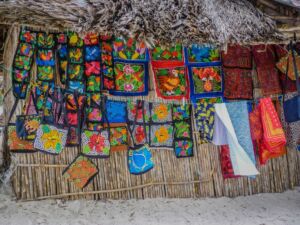
The Kuna revere their Shamans who consult the Cosmos for knowledge and understanding. Most of Kuna laws and culture are based on these principals and ideas.
Marco then told us of the darker side behind Kuna Yala. In the recent years, drug smuggling from Columbia into Panama through the Darien Gap has become less frequent due to the Panama Army cracking down on the high trafficking areas. So now the Cartels have turned their eyes to Kuna Yala.
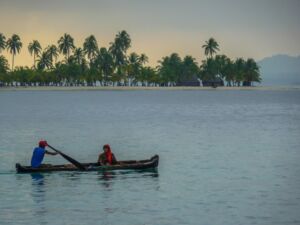
The Kuna are poor people. The region is remote and ruled by tribal elders. This, unfortunately, makes a great place for the Cartels to come in and bribe local chiefs to traffic the drugs through here. Marco then tells us of how the waters here have become dangerous now, and we should be escorted by local Kuna if we would like to explore.
San Blas the Caribbean Paradise
After a few more shots of rum and some delicious seafood soup, Marco showed us to our huts. For $15 US, you get a grass hut with a gas lantern, sand floor, and an antique mirror dating back to explorer’s times. Bathrooms are located outside, and the showers are in the ocean. It’s not much, but once you see the place, amenities will be the last thing on your mind.
By morning, the storm clouds had cleared, and the beauty of Isla Robinson began to show in every walk of life. Crystal blue and emerald waters and white sugar like sand beaches. It’s just you, the ocean breeze, and this perfect island.
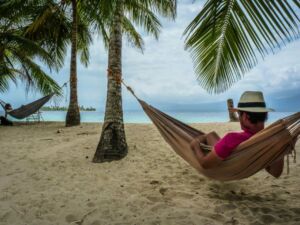
That day, I wandered to the other end of the island, where there was a Kuna village. The colourfully dressed Kuna women dry fish on fish lines, while children run around with their pet pigs and dogs. Life here is a slow pace, nothing happens in a hurry.
Marco was the hut owner, manager, and head chef. He bought local lobster and fish from the village and cooked us traditional Kuna food (absolutely incredible by the way!). All Kuna dishes were paired perfectly with more Caribbean rum… why is the rum always gone?
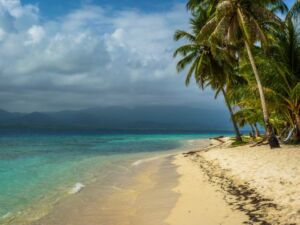
The next day, Marco arranged a fisherman from the village to take the Dutch travellers and I to some nearby uninhabited island for some snorkeling and exploring.
Our boat slowly hummed past a small, deserted island and the odd wooden fishing canoe. The warm Caribbean breeze and clean air made for a perfect day. Our boat driver, who was a Kuna native, told us of his home community of Rio Sidra, one of Kuna Yala’s most congested communities. He said it was a place we had to see for ourselves, if we wanted to see more of Kuna culture.
In the distance, another small island came into sight. Our driver told us we could stop here to explore. The boat plowed onto the beach, and we now became this island’s only inhabitants. Walking around the island is a great experience. You really get the sense of how raw Kuna Yala’s nature is.
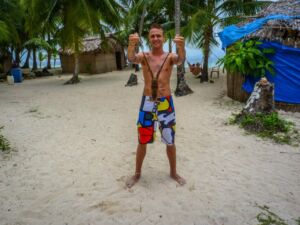
Marco had provided us with some snorkeling gear. Entering the crystal clear waters, the vibrant colours of the coral and fish are everywhere. Untouched by humans, this area is kept pristine in part by banning scuba diving, and preventing other commercial infrastructure from developing. Head out deeper and the reef is teeming with life. There are sharks, sting rays, assortments of rare coral, sea turtles, and even dog nose rays. This is some of the most beautiful ocean exploring I have ever done.
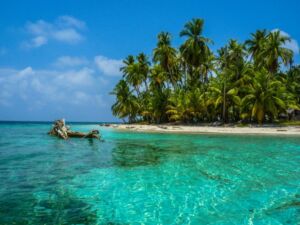
When I returned back to the beach, I was pleasantly surprised to see that some Kuna fisherman, wearing traditional Kuna outfits, had stopped by for a break. They were shy of us, but curious enough to give us a smile and wave.
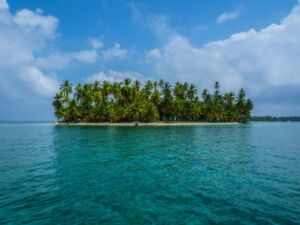
Rio Sidra – Kuna Central
Leaving this tropical paradise behind, our boat driver took us to Rio Sidra. This island took on a very different form from the others. Packed from shoreline to shoreline with houses, this island was incredibly congested, but also very interesting. As you squeeze through the back alleys that connect the thatched huts and concrete structures, you can find hidden markets selling barracuda and other catches of the day. Small shops sell handicrafts to the odd travelers who make it out here. The village even has a small community hospital and school.
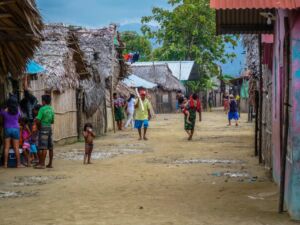
In Rio Sidra the colourful Kuna traditional outfits are replaced with western style clothing. Rap music can be heard from the shops rather than Kuna music. Westernization has made its way here, but the way of life is still very traditional Kuna. Many of the locals here speak English, so learning more about their culture and way of life becomes easy. The Kuna here are also much less shy, making taking pictures easier.
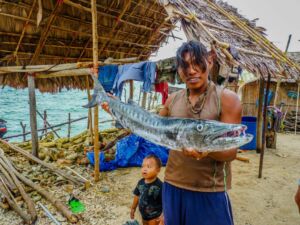
Crossing the San Blas Archipelago
I spent four more days on Isla Robinson exploring more nearby uninhabited islands, drinking rum with Marco, and lazing around in the hammock outside my hut. San Blas truly has the sense of exploration. There are plenty of undiscovered remote islands here, making this another spot in Panama that will make travelers pleased.
When the time came to leave, Marco said I would have to hitchhike with fishing boats to Carti. Carti is on mainland where there is plenty of connecting Jeeps to Panama City.
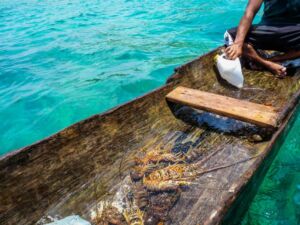
That morning, I said goodbye to my Dutch and Kuna friends, and hopped aboard yet another random fishing vessel. This time, the seas were calmer. We roamed the seas, along the way picking up the odd Kuna family also heading to mainland.
As we approached the mainland, the massive, green, forested mountains of Coastal Panama came into view. Behind me, the beautiful islands of San Blas began to disappear into the sea. The scene was epic. The rolling cloud spilled down over the mountains into the sea. At this time, the skies began to rumble with the onset of a brewing tropical storm, just as they had I had arrived, but bidding farewell to paradise.
On shore, Jeeps waited for our boat, now crammed full with many Kuna. We loaded up and were off, back to Panama City.
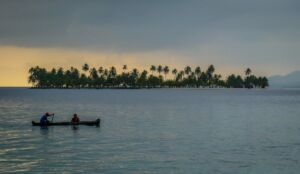
Useful Information
Location: San Blas, Comarca De Kuna Yala, Panama
Accommodation: Isla Robinson Huts – $15 US per night full board
Flights: Momondo:
Recommended Guide Book: Lonely Planet Panama
Tips: Be careful when photographing the Kuna, they are not fond of cameras. Bring snacks here, there is very little food.
Recommended Gear: Freediving Scuba Mask, one that is low profile is great for free dives on the reef, and also keeps the strong sunlight out. GoPro Dive Housing, GoPro Diving Filters, Don’t Forget Travel Insurance!
Recommended Tour Companies for Panama: G Adventures
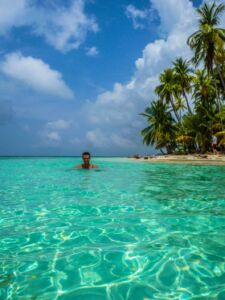
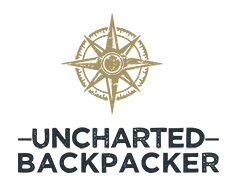
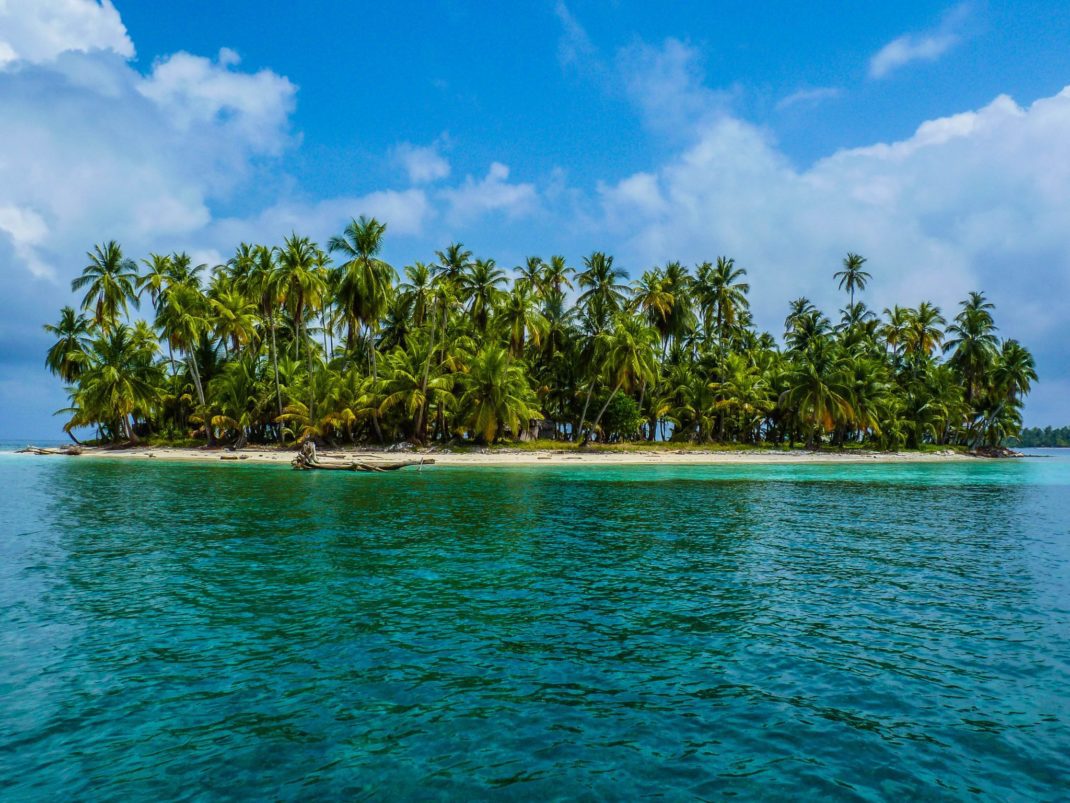
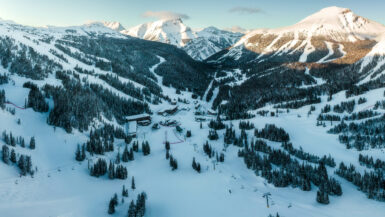
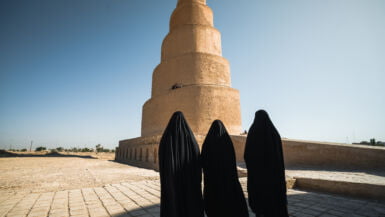
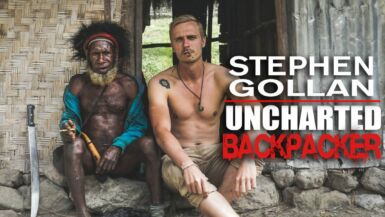
San Blas came highly recommended by locals and backpackers alike. It s beautiful, relatively affordable, and for such a drastic change in scenery from Panama City, travel is surprisingly convenient.